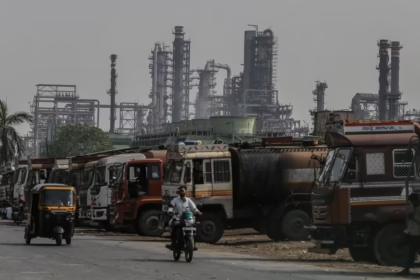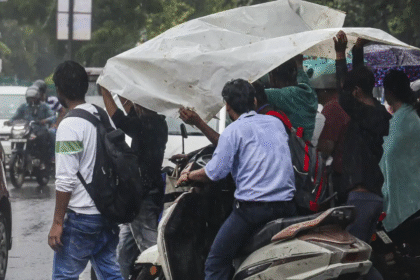Heartbreaking Tragedy: 3 Soldiers Killed, 9 Missing After Landslide in North Sikkim Army Base
Landslide in North Sikkim Army Camp Claims 3 Lives, 9 Soldiers Missing; 1,600 Tourists Rescued from Lachung
A tragic landslide struck an Indian Army camp at Chatten in North Sikkim late Sunday night, resulting in the deaths of three soldiers and leaving nine others missing. The landslide was triggered by a sudden surge in the Lachen River, which overflowed following intense rainfall over several days, officials confirmed on Monday.
The incident took place at Chatten, a high-altitude military zone located approximately 3 kilometers from Lachen, an area known for its vulnerability to natural disasters such as landslides and flash floods. Multiple army camps are located in the region due to its strategic importance, particularly along the Indo-China border.
Details of the Incident
According to Arun Thatal, Sub-Divisional Police Officer (SDPO) of Chungthang in Mangan district, “The army camp at Chatten was hit by a massive landslide after the water level in the Lachen River rose drastically. Three bodies of army personnel have been recovered, and nine are still unaccounted for. A search and rescue operation by army personnel is currently underway.”
The Indian Army also released a press statement acknowledging the disaster and confirming casualties. “A landslide occurred yesterday at Chatten, North Sikkim, damaging the surrounding habitat and resulting in the loss of lives. Three deceased personnel have been recovered so far. Identification of the deceased is underway, and efforts are ongoing to locate the missing,” the statement read.
Rescue Operations and Ongoing Efforts
In parallel with the army’s efforts to search for the missing soldiers, the district administration and disaster management authorities launched a large-scale rescue operation to evacuate stranded tourists. Heavy rains and multiple landslides had severely affected North Sikkim, particularly the tourist hubs of Lachen and Lachung, cutting them off from the rest of the state since May 30.
District Collector of Mangan, Anant Jain, confirmed the successful rescue of 1,600 tourists from Lachung on Monday morning. “Among those rescued were approximately 380 children. They had been stranded in Lachung for four days due to landslides and rising river levels. Debris blocking the access routes was cleared late Sunday night, and evacuation commenced early Monday with the help of the National Disaster Response Force (NDRF) and local authorities,” Jain said.
Approximately 150 tourists remain stranded in Lachen, another remote destination that serves as a base for visits to popular locations like Gurudongmar Lake and Yumthang Valley. Authorities assured that these tourists are safe and are currently housed in local hotels, with necessary food and medical support being provided.
Context and Previous Tragedies
This is not the first tragedy in the region this month. On May 30, nine people—including eight tourists—went missing when their vehicle plunged into the swollen Teesta River. All are presumed dead. That incident highlighted the increasing risks of travel in North Sikkim during the monsoon season, when rivers often swell and landslides are frequent due to unstable mountain slopes.
Chatten, where Sunday night’s landslide occurred, is among the worst-affected regions. In addition to hosting multiple army installations, the region also houses essential infrastructure like road links to border areas. Officials noted that the flooding and landslide have damaged roads, communications, and supply lines, which are being gradually restored.
Army’s Role and Civil-Military Coordination
The Indian Army has a significant presence in the region, both for defense preparedness and for humanitarian assistance in disaster-prone zones. Army engineers, along with personnel from the Indo-Tibetan Border Police (ITBP) and local administration, are actively involved in the rescue and road-clearing efforts.
The local administration, working closely with army units, has also deployed medical teams to affected regions. Relief camps have been set up for both stranded tourists and displaced locals.

Geographical and Strategic Significance of the Region
Lachen and Lachung, situated at altitudes exceeding 2,700 meters, serve as key tourist gateways and hold strategic military value due to their proximity to the India-China border. Tourists visiting high-altitude destinations like Gurudongmar Lake and Yumthang Valley often pass through these villages.
Given the challenging terrain, the region remains susceptible to extreme weather events, especially during the monsoon and early summer months when snowmelt can exacerbate river flooding.
Government and Disaster Management Response
State authorities have requested continued support from the Indian Army, Air Force, and NDRF for both rescue and relief operations. Helicopters may be deployed for aerial surveys and evacuation if weather conditions permit. Meanwhile, temporary shelters, food packets, and emergency medical kits have been dispatched to affected villages.
Officials emphasized that priority is being given to locating the missing army personnel and assisting the stranded tourists. “Our goal is to ensure that everyone still stuck in Lachen is safely evacuated in the next 24 hours,” a senior state official stated.
Conclusion
The North Sikkim landslide is a stark reminder of the vulnerabilities posed by climate-sensitive regions, especially those with both civilian and strategic significance. As search efforts for the nine missing soldiers continue and rescue operations for remaining tourists proceed, authorities are also assessing long-term mitigation strategies to prevent such disasters from recurring.
The incident underscores the critical need for better forecasting systems, robust infrastructure, and continuous civil-military coordination to address natural calamities in India’s high-altitude regions.








